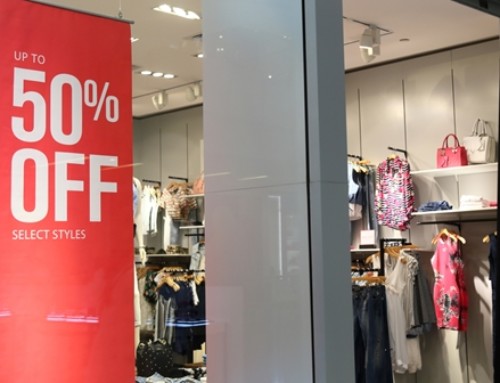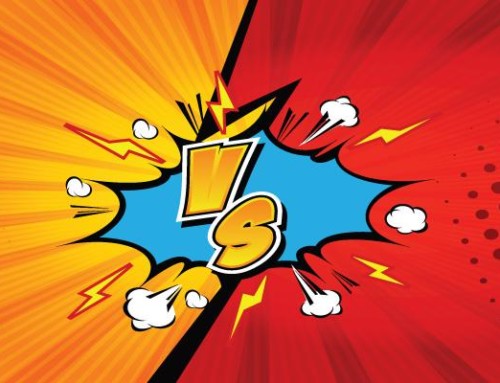As society pursues long term solutions to our planet’s problems, buyers are becoming more socially conscious with their decisions. The shift in priorities starts at the end-user and trickles upward as buying decisions are starting to gravitate towards sustainable printing options.
Now more than ever, companies are funneling a portion of their profits to make a difference for our environment. For many years the printing industry has been seen as large contributors to our landfills with the growing demand for product packaging and the vision of trees being cut down each time a sheet of paper gets printed. What many don’t see is the drastic changes toward sustainability and the new material choices that are now available.
Sustainable Printing Ink Sets
Proven ink sets utilized throughout the signage industry are either solvent-based, LED-based, latex-based, or UV based. Of the options, UV and LED-based inks are the most sustainable and environmentally friendly because they release extremely low odor, low emissions, and are effectively stable immediately after being cured. In fact, Fujifilm who manufactures Hopkins Printing’s Uvijet UV inks received UL GREENGUARD Certification.
What is GREENGUARD you ask? Vendors that use ink sets that have achieved GREENGUARD Certification ensures the product has met the world’s most rigorous and compressive standards for low emission of volatile organic compounds (VOCs) into indoor air. Since indoor air quality (IAQ) is closely tied to health, VOC emissions can be seen as a major contributor to indoor air pollution. GREENGUARD Certified products should be viewed as a trusted low VOC emitting product that can span across more than just printing. Print buyers seeking sustainable print marketing solutions should consider purchasing from vendors that use UV or LED-based inks as well as ink sets that have GREENGUARD Certifications.
Rigid Sustainable Printing Materials
Rigid substrates utilized for retail signage or point of purchase displays are manufactured from paper or plastic-based materials. Rigid signs play an important role in helping sell consumer goods. It allows signage to stand erect without reinforcement or protrudes into aisles grabbing people’s attention.
Historically, paper-based substrates were the only media that accepted ink, however as ink chemistry and technology changed over time new material options are now available. Today, nearly anything you can imagine can be printed on due to the creation of special ink additives, ink sets formulas, printing technologies, and material coatings.

Sustainable Printing Paper Options
Paper has long been considered as eco-friendly because it can be recycled repeatedly, but cutting down trees for the sake of making paper can be done in an intelligent and sustainable manner. Clients seeking paper-based print material options recognize generic products like cardstock and cardboard and know they can be recycled. However, if sustainable printing is a priority, we advised the sourcing Forest Stewardship Council (FSC) certified products. FSC products may cost more due to cover the cost of the certification, but they provide chain-of-custody proof that they originate from responsibly managed forests. Without the FSC certification, the paper products could be sourced from trees that won’t be replanted.
Besides cardboard or cardstock, there are constantly new sustainable printing products being invented for the retail signage and display industry. Some new products to keep your eye on include:
- conVerdBoard™ Coated is a rigid recyclable green alternative to PVC, foamboard, and styrene-based substrates. conVerdBoard is available in thicknesses ranging from 1.5mm to 6mm and is for interior signage applications. It is a blend of 100% post-consumer waste (PCW) and uses FSC certified fibers.
- ECOR panels are a sustainably sourced rigid composite produced from strictly water, pressure, and heat. There are no additives. ECOR is available in 1.6mm to 7mm thicknesses and is a good option for interior signage, wayfinding, and pop displays. The fibers originate from urban, farm, and forest sources. The printable graphic material ECOR FlatCOR WHITE is made from 100% recycled office paper.
- Earthboard is compostable, biodegradable, and made from 100% recycled fibers and composed of a minimum of 35% post-consumer waste. This rigid paperboard has printable white clay coatings on both sides with a brown center made of recycled paperboard. This interior use material is available at 0.050, 0.070, and 0.080-inch thicknesses.
- Falconboard® is a 100% recyclable rigid board that makes a great graphic display substrate due to its strength to weight ratio, rigidity, printability, and structural stability. Falcon board is made from renewable forest resources and is approved for the Sustainable Forestry Initiative (SFI) certification. It is a good option for interior signage, 3D displays, and point of purchase applications.
Sustainable Plastic Options
Retail environments can quickly look like a warzone with patrons touching, carts bumping, and employees’ mishandling products and graphics, which is why durability is highly desired. Plastic based products dominate the retail printing industry due to their ability to withstand damage over paper-based alternatives. Plastic is a preferred choice to avoid the cost, hassle, and resources needed to replace the same paper sign over and over. When it comes to semi-permanent and permanent displays, longevity becomes a priority. With that said, not all plastics should be viewed as harmful as some are very easy to recycle and use again.
- Polyethylene (PET) can be recycled as code #1 and is a plastic designed for single-use consumption food packaging but can be recycled for use in other industries such as polyester fibers, carpet, and print media. It can be made in clear or white base materials. PET is incredibly strong, nearly unbreakable, and is a good choice for indoor or outdoor signage uses.
- High-density polyethylene (HDPE) is labeled under recycle code #2 and is an incredibly easy and inexpensive plastic to recycle and reuse. HDPE doesn’t break down with sunlight or outdoor temperature freezing or heat which is why it’s a common material for milk jugs, containers, and outdoor items that require weather resistance and durability. HDPE remains very stable throughout its re-use and doesn’t break down easily. High-density polyethylene is a sustainable printing material that can be reusable and recyclable.
- Rigid Polypropylene (PP) is one of the most commonly produced plastics in the world with a #5 recycle code. Polypropylene is a thermoplastic which means that under high temperatures it doesn’t burn but liquifies, which makes it extremely recycle friendly and reusable without significant degradation. Further, PP has superior chemical resistance, elasticity, and toughness which can make it a great sustainable printing material choice for retail applications. Hopkins Printing offers a rigid PP that is top-coated for print receptibility and makes a great option for retail. PP can’t be router cut easily so PP is best used for thin gauges and die-cut applications.
In Summary
Print buyers of brands, retailers, and display manufacturers have options of sourcing sustainable printing materials and this is not a complete list. These options may come at a small to moderate price premium over conventional alternatives but you can rest assured that you’re doing your part. Be sure to ask for a sustainable solution at the time of your quote request to understand options that are best for your project goals. Hopkins Printing is a sustainable printing company that offers UV screen printing and UV digital printing with Greenguard Certifications for all industries. We strive to minimize our carbon footprint in all aspects of our business while providing leading quality and service.



